Do you have a question about the Piper ARCHER II and is the answer not in the manual?
Specifies critical airspeed limits such as VNE and VNO for safe operation.
Lists operating limits for the engine and propeller, including temperatures, pressures, and RPM.
Provides forward and rearward CG limits for Normal and Utility categories based on weight.
Offers an abbreviated checklist for critical situations with action sequences.
Steps to take if an engine fire occurs during starting.
Procedures for engine power loss during takeoff, including restart attempts.
Actions to take in case of engine power loss during flight.
Guidance for performing a landing with loss of engine power.
Steps to identify and handle a fire that occurs during flight.
Procedures for dealing with partial or complete loss of oil pressure.
Actions to take if fuel pressure is lost.
Steps to take when encountering abnormally high oil temperature.
Procedures for handling electrical system failures, including alternator issues.
Actions to take for electrical overload conditions, with separate procedures for interlocked and separate battery/alternator switches.
Steps to take if an inadvertent spin occurs.
Steps to take when carburetor ice is encountered.
Procedures to diagnose and correct engine roughness.
Provides a checklist for preflight, taxiing, and takeoff procedures.
Details the essential checks to perform before starting the engine and taxiing.
Steps to follow before initiating engine start.
Procedures for starting the engine when cold.
Procedures for starting the engine when hot.
Procedures for starting the engine when it is flooded.
Details essential checks to perform on the ground before takeoff.
Expands on pre-takeoff checks.
Describes normal, short field, and soft field takeoff techniques.
Details procedures for aircraft approach and landing, including flap usage.
Emphasizes the pilot's responsibility for ensuring proper loading within weight and CG limits.
Provides a step-by-step example of a flight plan calculation.
Lists available performance graphs for takeoff, climb, cruise, descent, and landing.
Details the steps for weighing the aircraft to determine basic empty weight and CG.
Explains how basic weights and CG are recorded and updated.
Outlines the process for calculating total weight and CG position for flight.
Explains the dual controls, stabilator, trim, and flap systems.
Details the operation of throttle, mixture, and carburetor heat controls.
Explains the components of the aircraft's electrical system, including breakers and accessories.
Explains the pitot-static system, its components, and maintenance.
Explains the stall warning system operation and preflight check.
Outlines required inspection intervals and compliance responsibilities.
Provides instructions for servicing the landing gear oleos, including fluid and inflation.
Specifies oil capacity, recommended grades, and change intervals.
Details fuel servicing, requirements, and handling precautions.
Outlines cleaning procedures for fuel screens and carburetors.
Supplement for Garmin GFC 500 Autopilot, covering its installation and operation.
Details emergency procedures for autopilot malfunctions and disconnects.
Steps to take for autopilot malfunction or pitch trim runaway.
Procedures for autopilot failure or abnormal disconnect events.
Actions to take if the pitch trim servo fails.
Describes the autopilot's response to overspeed conditions.
Describes the autopilot's response to underspeed conditions.
Covers non-normal autopilot operations and failure scenarios.
Steps to take for an autopilot abnormal disconnect.
Actions if the autopilot pre-flight test fails.
Procedures for loss of navigation signal impacting autopilot.
Actions for loss of airspeed data affecting autopilot operation.
Actions for loss of altitude data affecting autopilot operation.
Procedures for loss of GPS information affecting autopilot.
Actions for heading data source failure affecting autopilot.
Procedures for elevator mistrim conditions.
Describes the ESP system's function and activation criteria.
Specifies critical airspeed limits such as VNE and VNO for safe operation.
Lists operating limits for the engine and propeller, including temperatures, pressures, and RPM.
Provides forward and rearward CG limits for Normal and Utility categories based on weight.
Offers an abbreviated checklist for critical situations with action sequences.
Steps to take if an engine fire occurs during starting.
Procedures for engine power loss during takeoff, including restart attempts.
Actions to take in case of engine power loss during flight.
Guidance for performing a landing with loss of engine power.
Steps to identify and handle a fire that occurs during flight.
Procedures for dealing with partial or complete loss of oil pressure.
Actions to take if fuel pressure is lost.
Steps to take when encountering abnormally high oil temperature.
Procedures for handling electrical system failures, including alternator issues.
Actions to take for electrical overload conditions, with separate procedures for interlocked and separate battery/alternator switches.
Steps to take if an inadvertent spin occurs.
Steps to take when carburetor ice is encountered.
Procedures to diagnose and correct engine roughness.
Provides a checklist for preflight, taxiing, and takeoff procedures.
Details the essential checks to perform before starting the engine and taxiing.
Steps to follow before initiating engine start.
Procedures for starting the engine when cold.
Procedures for starting the engine when hot.
Procedures for starting the engine when it is flooded.
Details essential checks to perform on the ground before takeoff.
Expands on pre-takeoff checks.
Describes normal, short field, and soft field takeoff techniques.
Details procedures for aircraft approach and landing, including flap usage.
Emphasizes the pilot's responsibility for ensuring proper loading within weight and CG limits.
Provides a step-by-step example of a flight plan calculation.
Lists available performance graphs for takeoff, climb, cruise, descent, and landing.
Details the steps for weighing the aircraft to determine basic empty weight and CG.
Explains how basic weights and CG are recorded and updated.
Outlines the process for calculating total weight and CG position for flight.
Explains the dual controls, stabilator, trim, and flap systems.
Details the operation of throttle, mixture, and carburetor heat controls.
Explains the components of the aircraft's electrical system, including breakers and accessories.
Explains the pitot-static system, its components, and maintenance.
Explains the stall warning system operation and preflight check.
Outlines required inspection intervals and compliance responsibilities.
Provides instructions for servicing the landing gear oleos, including fluid and inflation.
Specifies oil capacity, recommended grades, and change intervals.
Details fuel servicing, requirements, and handling precautions.
Outlines cleaning procedures for fuel screens and carburetors.
Supplement for Garmin GFC 500 Autopilot, covering its installation and operation.
Details emergency procedures for autopilot malfunctions and disconnects.
Steps to take for autopilot malfunction or pitch trim runaway.
Procedures for autopilot failure or abnormal disconnect events.
Actions to take if the pitch trim servo fails.
Describes the autopilot's response to overspeed conditions.
Describes the autopilot's response to underspeed conditions.
Covers non-normal autopilot operations and failure scenarios.
Steps to take for an autopilot abnormal disconnect.
Actions if the autopilot pre-flight test fails.
Procedures for loss of navigation signal impacting autopilot.
Actions for loss of airspeed data affecting autopilot operation.
Actions for loss of altitude data affecting autopilot operation.
Procedures for loss of GPS information affecting autopilot.
Actions for heading data source failure affecting autopilot.
Procedures for elevator mistrim conditions.
Describes the ESP system's function and activation criteria.
| Manufacturer | Piper Aircraft |
|---|---|
| Model | Archer II |
| Engine | Lycoming O-360-A4M |
| Horsepower | 180 hp |
| Empty Weight | 1, 450 lb (658 kg) |
| Max Takeoff Weight | 2, 550 lb (1, 157 kg) |
| Seating | 4 |
| Rate of Climb | 720 ft/min (3.7 m/s) |
| Range | 522 miles |
| Wingspan | 35 ft 6 in |
| Fuel Capacity | 50 US gallons (189 liters) |

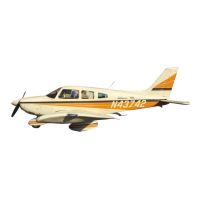
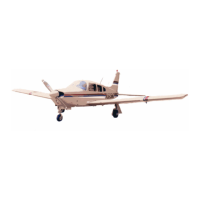
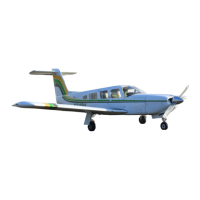
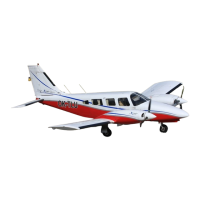


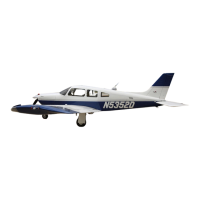




